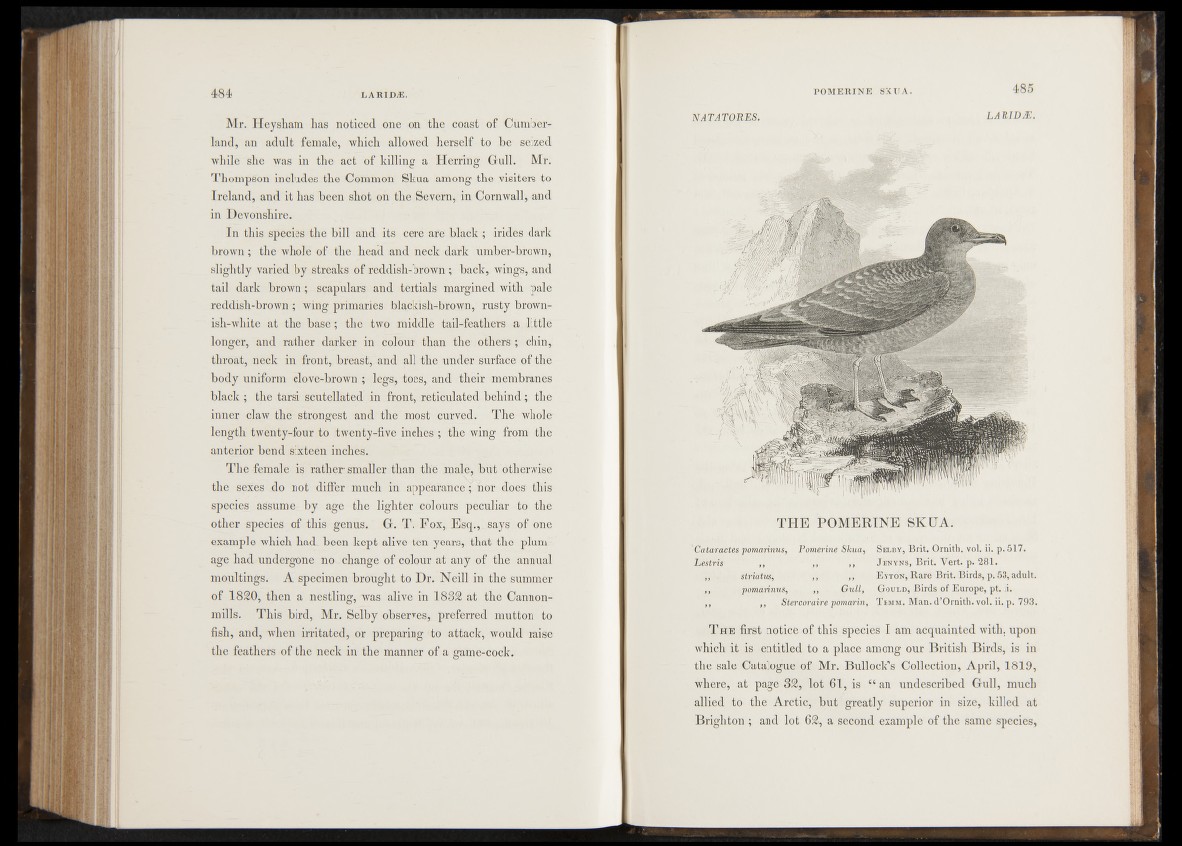
Mr. Hey sham has noticed one on the coast of Cumberland,
an adult female, "which allowed herself to be seized
while she was in the act of killing a Herring Gull. Mr.
Thompson includes the Common Skua among the visiters t°
Ireland, and it has been shot on the Severn, in Cornwall, and
in Devonshire.
In this species the bill and its cere ar'e black ; irides dark
brown; the whole of the head and neck dark umber-brown,
slightly varied by streaks of reddish-brown; back, wings, and
tail dark brown; scapulars and tertials margined with pale
reddish-brown ; wing primaries blackish-brown, rusty brownish
white at the base; the two middle tail-feathers a little
longer, and rather darker in colour than the others; chin,
throat, neck in front, breast, and all the under surface of the
body uniform clove-brown ; legs, "toes, and their membranes
black ; the tarsi scutellated in front, reticulated behind; the
inner claw the strongest and the most curved. The whole-
length twenty-four to twenty-five inches ; the wing from the
anterior bend sixteen inches.
The female is rather smaller than the male, but otherwise
the sexes do not differ much in appearance-; nor does' this
species assume - by age the lighter colours peculiar to the
other species of this genus. G. T. Fox, Esq.,_ says of one
example which had. been kept alive ten years, that the plumage
had undergone no-change of colour at any of the annual
moultings. A specimen brought to Dr. Neill in the summer
of 1820, then a nestling, was alive in 1882 at the Cannon-
mills. This bird, Mr. Selby, observes, preferred mutton to
fish, and, when irritated, or preparing ‘to attack, would raise
the feathers of the neck in the manner of a game-cock.
T H E POM E R IN E SKCJA.
Cataractes pomarinus, Pomerine Skua, Selby, Brit. Ormth. vol, h. p. 517.
Lestris ,, ,, ,, J enyns, Brit. Vert. p. 281.
,, - stviatus, ,, ,, E yton, Rare Brit. Birds, p. 53, adult.
,, pomarinus, „ Gull, G ould, Birds of Europe, pt. ii.
,, ,, Stercoraire pomarin, Temm. Man. d’Ornith. vol. ii. p. 793.
The first notice of this species I am acquainted with, upon
which it is entitled to a place among our British Birds, is in
the sale Catalogue of Mr. Bullock’s Collection, April, 1819,
where, at page 32, lot 61, is i( an undescribed Gull, much
allied to the Arctic, but greatly superior in size, killed at
Brighton ; and lot 62, a second example of the same species,